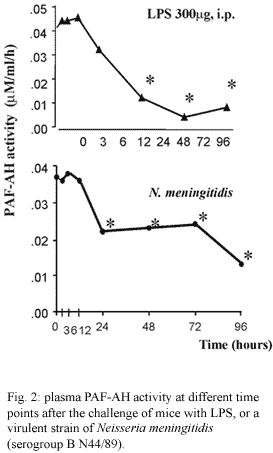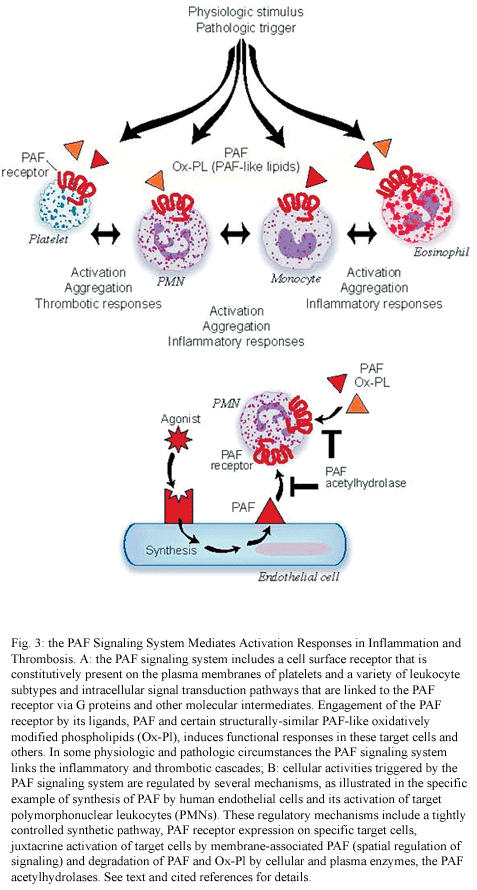Platelet-activating factor (PAF) is one of the most potent lipid mediators involved in inflammatory events. The acetyl group at the sn-2 position of its glycerol backbone is essential for its biological activity. Deacetylation induces the formation of the inactive metabolite lyso-PAF. This deacetylation reaction is catalyzed by PAF-acetylhydrolase (PAF-AH), a calcium independent phospholipase A2 that also degrades a family of PAF-like oxidized phospholipids with short sn-2 residues. Biochemical and enzymological evaluations revealed that at least three types of PAF-AH exist in mammals, namely the intracellular types I and II and a plasma type. Many observations indicate that plasma PAF AH terminates signals by PAF and oxidized PAF-like lipids and thereby regulates inflammatory responses. In this review, we will focus on the potential of PAF-AH as a modulator of diseases of dysregulated inflammation.
platelet-activating factor; platelet-activating factor; acethylhydrolase; inflammatory disease; sepsis



